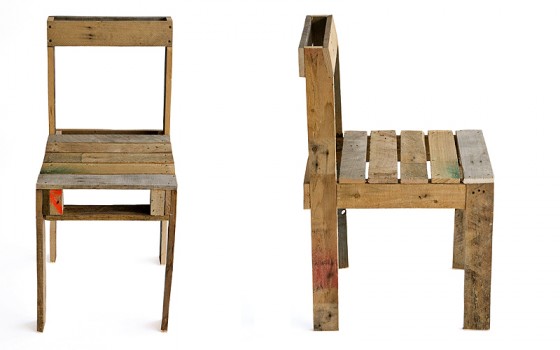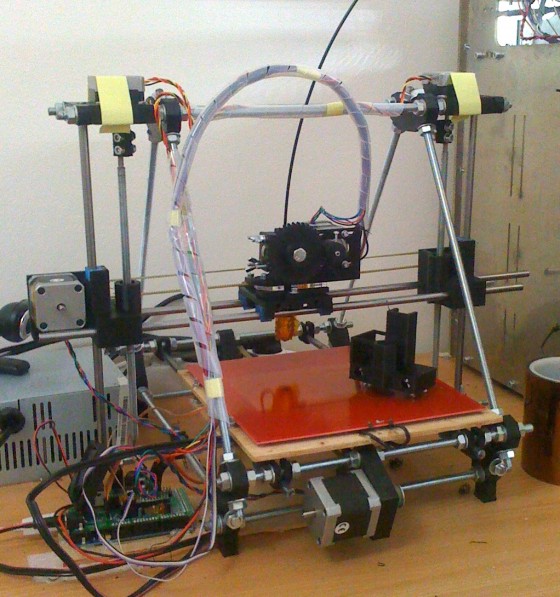If the global population were to all consume at the same rate as the Western world, we would require three to five planets. We are a growing population with growing consumption rates on a finite planet. If we don’t make some dramatic changes to our production and consumption cycles soon, we will run out of the resources, space and time needed to fix it.
Some steps are already being taken towards a sustainable future, re-use or upcycling is becoming more commonplace and recycling is far more prolific than in previous years, with even larger companies such as Puma beginning to address sustainability issues. However, the change is slow, and even at maximum re-use and recycle rates we cannot continue to consume at our current pace. So perhaps it is time more innovative solutions were considered?
For many being eco-friendly is still considered dull and undesirable, it is associated with cutting back from our current lifestyle, leading to a poorer standard of living. However, over the past sixty years, while consumerism has accelerated US national happiness levels have actually decreased. Maybe owning so much stuff isn’t really what we want after all?
As consumers we are used to the idea of buying the best available solution to our problem, and then when this breaks, or a better model comes along, we abandon the old version in favour of something new that suits our needs that little bit better. But what if the consumer was not dependent on what the designer and manufacturer chooses to make?
Consumer customization is already a popular idea, as proven by the IKEA hacking phenomenon, a blog dedicated to different ways people have adapted standard IKEA furniture so they are more suited to their individual needs. If a consumer is able to adjust a product, they are more likely to own something, which they really want, making the process of consumption more beneficial and rewarding: and thereby reducing the need for such frequent replacement.
Similarly, if the consumer has been part of the design or making process they are likely to build a stronger emotional bond with the item. This again encourages product longevity as well as giving consumers the knowledge of the materials and construction process that they need to repair or recycle the items themselves.
Making Your Own Furniture

However suggesting that consumers make their own furniture is easy, putting this into practice is much more difficult. Nina Tolstrup of Studiomama developed this idea with Pallet Chair Hi, rather than buying the chair you buy the instructions on how to make it. The instructions cost just £10 and the chair can be made from wooden pallets. So for a relatively small cost, and some manual labour, almost anyone is able to own a designer item.
Through this method, sustainable design becomes accessible to a wider range of consumers, something that is essential if it is to become part of popular design practice and have a real impact in society.
However Tolstrup’s design, although affordable, is still a niche product. Collaborative design and manufacture has possibilities to transform consumption, but is unlikely to appeal to those uninterested in design or DIY. Therefore, these ideas must be filtered down into a more mainstream design solution appropriate for a larger part of society.
3D Printing
One solution could be 3D printing, which has the potential to completely revolutionise systems of production by making it possible to create objects, to your exact specifications – in your own home.
With the correct equipment, you can 3D-print anything, from a replacement screw to an entire chair. Objects would no longer need to be made in large-scale factories but could be made in your own home or local community to your exact specifications. This also negates the need for transportation and packaging, saving further energy and resources.
3D printing is currently quite expensive, although the cost is dropping rapidly – partly due to the recent popularity in open-source designs and software which has made this technology more accessible to a wider cross-section of society. These internet communities share designs and ideas with not just other designers but also the general public. Adrian Bowyer has even created an open-source 3D printer, which can be built for less than €500 and is able to self-replicate, spreading the potential of how far this technology can grow.

Of course, 3D printing is a radical approach to our sustainability issues, as it would tear up the traditional hierarchy of designer, producer and consumer. This may seem controversial but similar changes have already taken place in other sections of society. We are already selling unwanted items on eBay or sharing information on Wikipedia, so it is not unthinkable to consider that our design and production cycles could see the control move from the few to the many in a similar way.
Change of Attitude
However, the rise of 3D printing has potentially negative consequences too. The ability to manufacture in our homes could also lead to the production of yet more unnecessary possessions. Therefore without a change of attitudes and, crucially, the ability to recycle 3D printed items the problem of over-consumption could still remain, simply in a different format.
We also cannot fail to ignore that alterations to our production, use and consumption cycles will also lead to a change in our economic system moving away from an economy based on consumerism.
As with all issues of sustainability there is no single solution to creating sustainable design. But it is hard to imagine a sustainable society where the parts of designer, manufacturer and consumer remain in their traditional roles.
Manufacturers must respond to consumer pressure to create sustainable products, and take responsibility for their products at all stages of the consumption cycle. Meanwhile designers must change the way they work; creating concepts as well as objects and designing not just for contemporary society but for the future too.
Pics via studiomama.com and Prusajr (GNU Licence)
By Sophie Corfan
I am a student at Manchester School of Art and am currently striving to create a sustainable design practice. This article is written based on research for an extended essay written for my final year assessment on sustainable design and consumerism.
To find out more about me and my design practice please visit my website: www.sophiecorfan.co.uk
